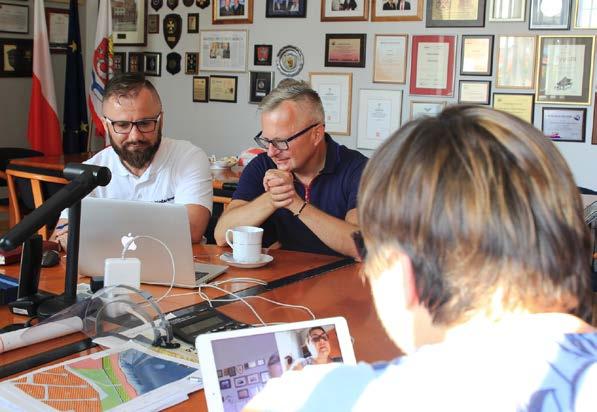
2 minute read
Youth shared their safety feeling
In September 2019, partners from UBC member cities (Liepāja Municipal Police, Liepāja Children and Youth Centre “Youth house”, Southwest Finland Emergency Services, Espoo Youth Services and Kaunas City Municipality) began the Council of the Baltic Sea States Project Support Facility funded project “Youth for safer youth”.
The goal of the project was to develop a questionnaire together with youth representatives to find out the safety concerns of youth around the Baltic Sea Region and to determine the ways that the youth could be reached to educate them about the safety.
Advertisement
The first meeting (December 2019) of the project was combined together with UBC Safe Cities Commission meeting where safety experts together with youth representatives worked on developing the questionnaire. Of course, the COVID-19 pandemic did affect the run of the project, some parts it made easier, some more difficult. However, the questionnaire was made and the youth was surveyed.
In total the questionnaire received 4281 responses (Finland – 3156, Latvia – 702, Lithuania – 423) and the majority of respondents were between ages 14–18 (68 %), followed by respondents under 14 years of age (19 %).
To find out, how to reach youth one of the questions was to find out which social networks and sites they use. The questionnaire showed that in total the youth mainly uses YouTube (94 %), followed by Whatsapp and Instagram (both 87 %) and close follower is Snapchat (82 %). by Kaspars Vārpiņš |kaspars.varpins@liepaja.lv The replies showed that there are big differences between countries, i.e. in Finland Facebook is used only by 34 % of respondents, meanwhile in Lithuania Facebook is used by 93 % of respondents. Other difference is in usage of Whatsapp, in Finland and Latvia it is more popular (more than 95 %), than in Lithuania (only 18 %).
In replying about their own feelings about knowledge of different safety topics, majority said, that they have good and average knowledge regarding different safety topics. Meanwhile the questionnaire showed that the biggest attention should be paid to the youth knowledge about First Aid, Psychological safety and Safety on water.
One of the alarming findings was that around 20 % of youth have been bullied online. The results of the questionnaire indicated more than one alarming finding. More detailed conclusion about each country responses will be available in the UBC homepage in following weeks.
In the last step of the project the youth representatives together with safety experts will discuss about possible future project, in which could be developed various methods to educate youth about safety. If you would like to take part, please let me know (e-mail: kaspars.varpins@liepaja.lv).
Stay safe!










